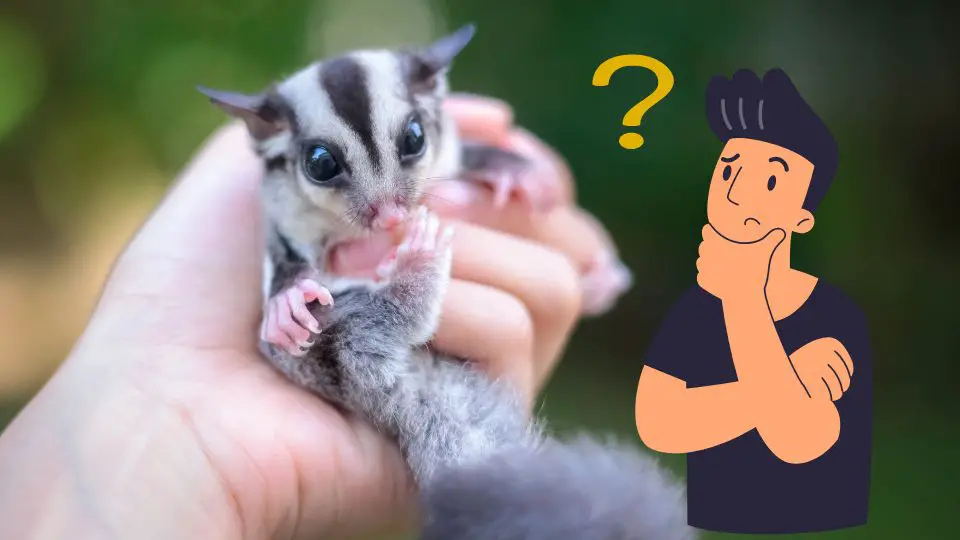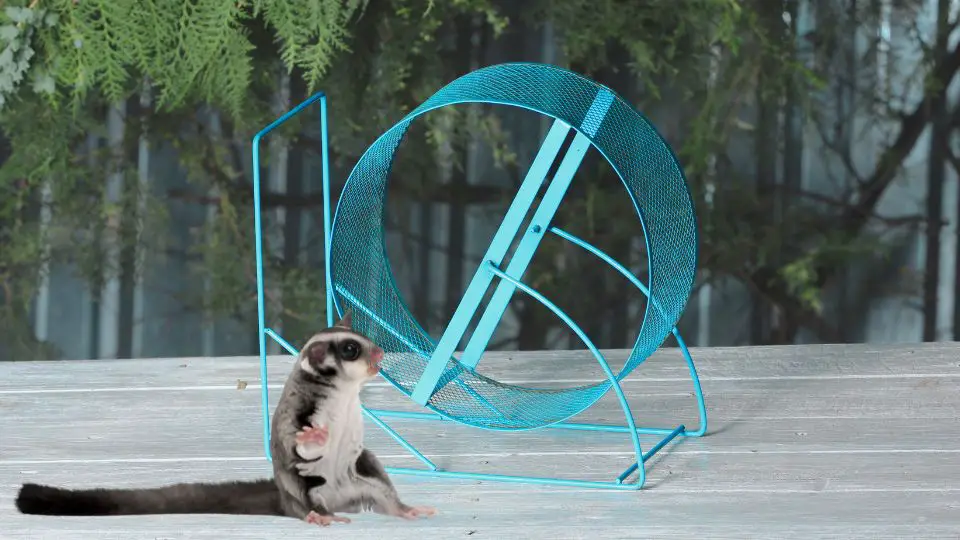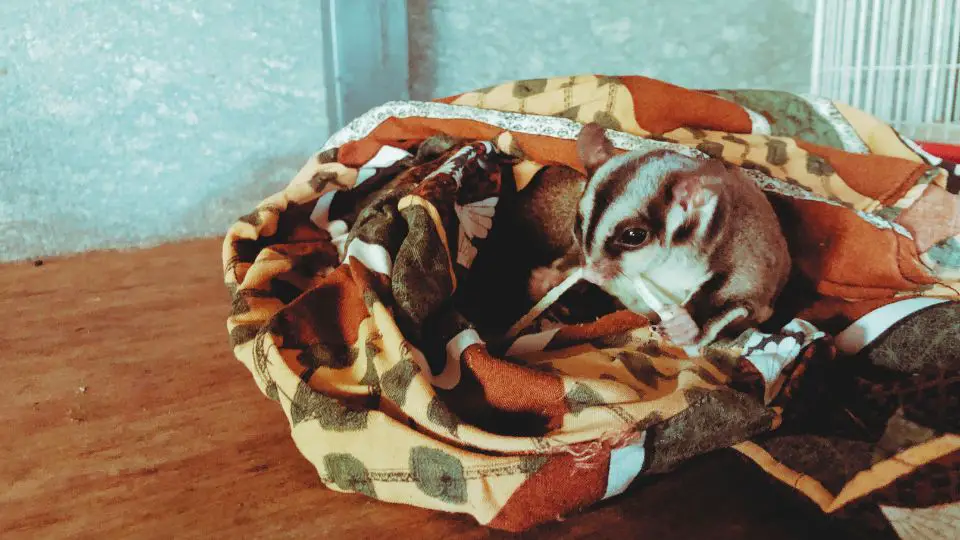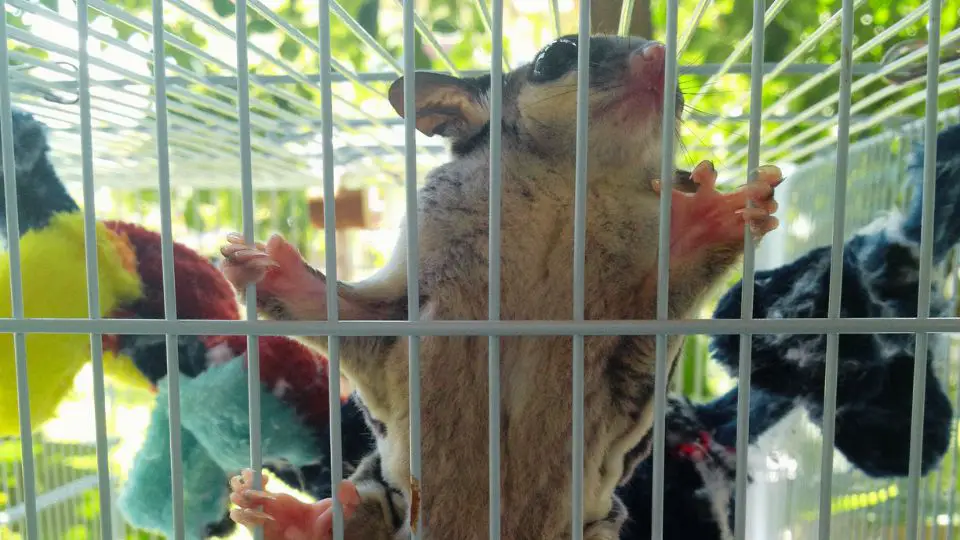Sugar glider neutering is a surgical procedure performed to remove the testicles of a male sugar glider. The surgery is fast and relatively simple, and you usually get your little pet back in the same day.
There are two methods of neutering sugar gliders: one that involves removing just the testicles, and one that involves removing both the testicles and scrotum. Both methods have their pros and cons, and the decision of which method to use should be made by the veterinarian performing the surgery, taking into account the individual animal’s health and medical history.
In this article, we talk about what you need to know about neutering sugar gliders, including the benefits and risks of the surgery, and what you should do after it.
How to neuter a sugar glider
Sugar glider neutering is the surgical removal of the testicles of a sugar glider. This is generally done to prevent breeding, although it may also be done for medical reasons. Sugar gliders need to be at least 8 months old in order to be neutered.
Sugar gliders have 2 scent glands, one located on each side of their body just behind the shoulder. These scent glands produce a strong smelling substance that is used to mark their territory. What neutering does is removing the hormones that produce this scent.
It’s important to remember that, when we talk about neutering a sugar glider, we talk about male gliders. Female gliders aren’t neutered because the surgery is much more complicated and can have serious consequences. Be careful with a vet that recommends neutering your female glider.
So you have to find a vet who is experienced in performing this type of surgery on sugar gliders. It is also important to make sure that the sugar glider is healthy and free of any medical conditions that might make the surgery more risky.
There are 2 types of neutering.
Pom on
Pom on neutering is when only the testicles are removed. This method is less invasive than a traditional neutering surgery. It is the preferred method of neutering for sugar gliders because the incision will close itself within 24 hours and there is no need for stitches.
Pom off
Pom off neutering is when both testicles and scrotum are removed. This method is more invasive than a pom on, but it is sometimes necessary if there are medical reasons for removing the scrotum.
Using laser removal, pom off method is very quick and most of the time the sugar glider doesn’t need recovery time. After the surgery, stitches are usually required to close the incision.
Neutering schedule
Usually, the neutering process looks like this:
- Schedule an appointment with your veterinarian. Sugar gliders need to be at least 8 months old in order to be neutered.
- On the day of the surgery, bring your sugar glider to the vet in a carrier or cage.
- The vet will give your sugar glider a physical exam and may take some blood tests to make sure he is healthy enough for surgery.
- Once the vet has determined that your sugar glider is healthy enough for surgery, he will be given a general anaesthetic.
- Depending on the chosen method, the vet will do the surgery.
- The incisions will be closed with stitches if needed, and your sugar glider will be given a pain medication to help him recover from the surgery.
- You will be able to take your sugar glider home the same day as the surgery.
- It is important to keep an eye on your sugar glider for the first few days after surgery and to make sure he is eating and drinking normally.
- If you have any concerns, you should contact your vet.
What are the benefits of spaying or neutering your sugar glider?
There are many benefits to spaying or neutering your sugar glider, including:
Reduced aggression
Sugar gliders that are not neutered can be more aggressive, both towards other sugar gliders and humans. They will also be less territorial, which can be a good thing if you have more than one sugar glider.
Improved health
Sugar gliders that are not neutered are at a higher risk for certain health problems, such testicular cancer.
Prevent breeding
If you have a male and a female glider and you don’t want them to breed, neutering the male glider is the best way to prevent it.
Less odor
Sugar gliders have scent glands that produce a strong smelling substance. This substance is used to mark their territory. Neutering your sugar glider will remove the hormones that produce this scent.
What are the risks of spaying or neutering your sugar glider?
As with any surgery, there are risks involved in spaying or neutering your sugar glider. These risks include:
Infection
There is always a risk of infection with any surgery. These can include infections at the surgery site or a more serious infection that could affect the entire body.
Bleeding
There is a small risk of bleeding with any surgery. You should watch for any signs of excessive bleeding and contact your vet if you are concerned.
Stress
Any surgery can be stressful for your sugar glider. It is important to make sure he has a good recovery area set up at home, away from any other pets or things that could stress your little pet.
What to do after the surgery
As we mentioned before, it is important to keep an eye on your sugar glider for the first few days after surgery. Make sure he is eating and drinking normally, and if you have any concerns you should also remove their wheel.
Also, make sure to give your sugar glider time to recover before handling him too much. He will be feeling a bit sore and will need some time to rest.
You should also keep your sugar glider in a quiet area for the first day or two after surgery. This will help him to recover and reduce the risk of stress.
It is also important to make sure that your sugar glider does not lick or pull at his stitches. This could cause the stitches to come loose or lead to an infection.
After a few days, you can start to slowly reintroduce your sugar glider to his normal activities and diet. If you have any questions or concerns about spaying or neutering your sugar glider, you should contact your veterinarian.
Do neuter sugar gliders smell?
As we mentioned before, sugar gliders have scent glands that produce a strong smelling substance. This substance is used to mark their territory. Neutering your sugar glider will remove the hormones that produce this scent, so they should not smell after the surgery.
How long does it take for fur to grow back after spaying?
After spaying your male glider, it can take up to two months for the fur to grow back.
How much does it cost to neuter a sugar glider?
The cost of spaying or neutering your sugar glider will vary depending on the vet and the area you live in.
But you must keep in mind that sugar gliders are exotic animals, so the cost of neutering a sugar glider is higher than for a normal pet, such as a cat or a dog.
On average, the cost of neutering a sugar glider will be between $100 and $200.
Conclusion
As you can see, there are many benefits to spaying or neutering your sugar glider. This surgery will help to improve your glider’s health, prevent breeding, and reduce the risk of certain health problems.
There are also some risks involved with any surgery, but these can be minimized by working with an experienced veterinarian. The cost of neutering a sugar glider is higher than for a normal pet, but the benefits outweigh the costs.







